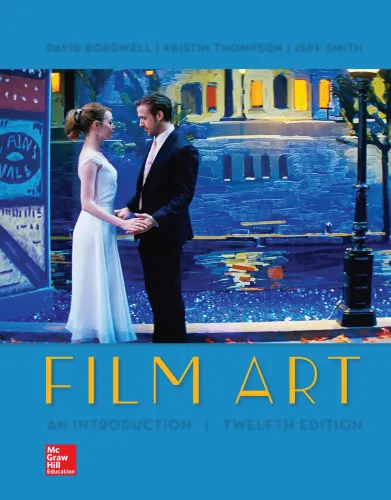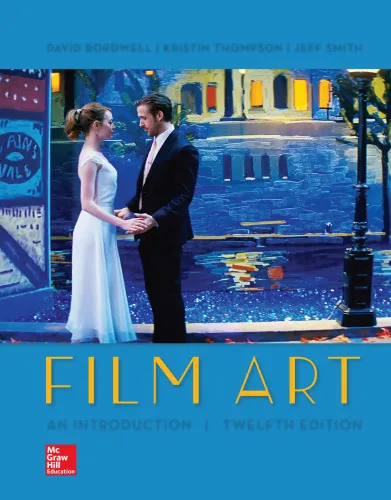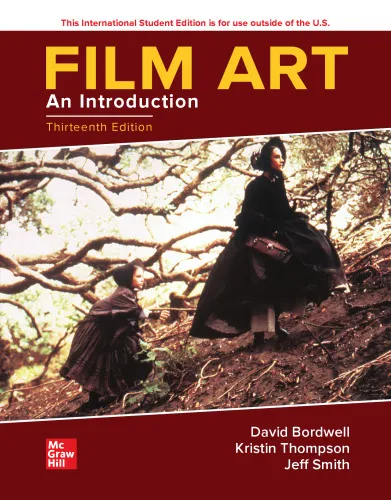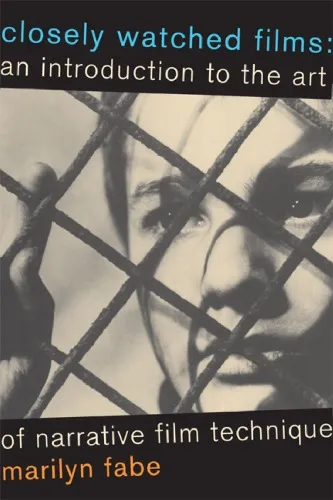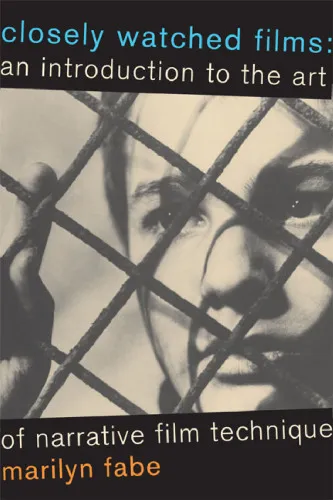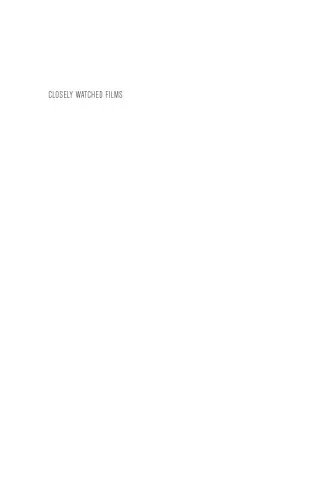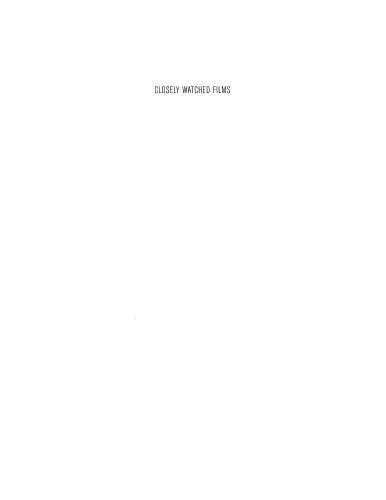Film art: an introduction
4.7
بر اساس نظر کاربران

شما میتونید سوالاتتون در باره کتاب رو از هوش مصنوعیش بعد از ورود بپرسید
هر دانلود یا پرسش از هوش مصنوعی 2 امتیاز لازم دارد، برای بدست آوردن امتیاز رایگان، به صفحه ی راهنمای امتیازات سر بزنید و یک سری کار ارزشمند انجام بدینکتاب های مرتبط:
خلاصه تحلیلی کتاب
کتاب Film art: an introduction اثر مشترک Bordwell، Thompson و Smith، یکی از منابع معتبر و کلاسیک در حوزه مطالعات سینمایی است که با نگاهی علمی و دقیق به بررسی ساختار، فرم و تکنیکهای روایی فیلمها میپردازد. این اثر نه صرفاً یک کتاب آموزشی، بلکه یک راهنمای تحلیلی جامع برای درک عمیقتر هنر فیلم محسوب میشود. نویسندگان با ترکیب مثالهای متنوع از تاریخ سینما، تلاش کردهاند تا مفاهیم پیچیده را بهگونهای ارائه دهند که هم برای دانشجویان رشته سینما و هم برای پژوهشگران باتجربه قابلاستفاده باشد.
در این کتاب، بخشهای اصلی مثل mise-en-scène، cinematography، montage و sound با مثالهای دقیق و تحلیلهای موشکافانه توضیح داده شدهاند. تاکید نویسندگان بر این است که فیلم بهعنوان یک اثر هنری، محصول انتخابهای آگاهانه در هر بخش از ساختار آن است؛ از قاببندی تصویر گرفته تا ریتم تدوین و ترکیب صدا. این نگاه، خواننده را به شکلی فعال در فرآیند مشاهده و تحلیل درگیر میکند و قابلیت انتقال آن به پروژههای پژوهشی و آموزشی را بالا میبرد.
نکات کلیدی و کاربردی
یکی از برجستهترین نکات کتاب، توجه ویژه به ارتباط میان فرم و معنا در فیلم است. نویسندگان با بهرهگیری از نظریههای فرمالیستی و واقعگرایانه، نشان میدهند که چگونه اجزای فنی با لایههای محتوایی در هم تنیده میشوند. این ارتباط، نهفقط برای تحلیل فیلمهای کلاسیک، بلکه برای فهم آثار معاصر نیز کاربرد دارد.
خواننده در این کتاب میآموزد که استفادهی دقیق از ابزارهای سینمایی، همچون نورپردازی یا عمق میدان، چگونه میتواند بر برداشت مخاطب تاثیر بگذارد. همچنین، بخشی از کتاب به بررسی تاریخچه تکامل زبان فیلم اختصاص دارد که دانستن آن برای درک روند تغییرات سینمایی ضروری است.
نقلقولهای ماندگار
یکی از جذابیتهای کتاب، جملات و بینشهایی است که نگاه تازهای به هنر هفتم ارائه میکنند. این نقلقولها، عصارهی دههها تحقیق و تجربه را در قالبی فشرده منتقل میسازند.
«درک فیلم مستلزم آن است که بدانیم هیچ انتخابی در تصویر یا صدا تصادفی نیست.» نامشخص
«فرم فیلم، زبان پنهان ارتباط با ذهن و احساس مخاطب است.» نامشخص
چرا این کتاب اهمیت دارد
اهمیت Film art: an introduction فراتر از ارزش آموزشی آن است؛ این کتاب به شکلی بنیادین، شیوهٔ اندیشیدن درباره فیلم را تغییر میدهد. در محیطی که محتوای تصویری در حجم عظیم تولید میشود، توانایی تحلیل دقیق و آگاهانه فیلم، مزیتی بیبدیل برای پژوهشگران و حتی مخاطبان جدی سینماست.
این اثر همچنین میتواند بهعنوان یک منبع مرجع در کلاسهای دانشگاهی، کارگاههای نقد فیلم و حتی مطالعات بینرشتهای مورد استفاده قرار گیرد. توضیح مفاهیم با مثالهای مشخص، سبب شده تا پیچیدگی نظریههای سینمایی برای مخاطب کاهش یابد، در حالی که عمق علمی اثر حفظ شده است.
نتیجهگیری الهامبخش
در نهایت، Film art: an introduction نهتنها برای دانشجویان سینما و پژوهشگران، بلکه برای هر کسی که به فهم عمیق هنر فیلم علاقه دارد، یک مسیر روشن و ساختاریافته فراهم میکند. این کتاب نشان میدهد که تحلیل سینما تلفیقی است از دقت علمی، حساسیت هنری، و توانایی پیوند این دو. اگر به دنبال آموختن زبان فیلم و توسعه نگاه انتقادی خود هستید، مطالعه این اثر را آغاز کنید و دستاوردهای آن را با دیگر علاقهمندان به اشتراک بگذارید.
دعوت ما به شما این است که با ورود به دنیای این کتاب، سفر جدیدی را در کشف لایههای پنهان هنر هفتم تجربه کنید و این تجربه را به گفتگوها و پروژههای سینمایی خود بیاورید.
Analytical Summary
Originally developed by David Bordwell, Kristin Thompson, and Jeff Smith, Film art: an introduction has long been regarded as one of the most authoritative resources for understanding cinema as both an art form and a cultural artifact. This comprehensive volume examines the fundamental principles of film form, narrative structure, style, and the socio-cultural dynamics that influence motion pictures.
Each chapter situates film within a framework that combines detailed technical knowledge—covering cinematography, editing, sound, and mise-en-scène—with an appreciation of historical contexts. The book’s approach pairs rigorous academic analysis with clear, accessible language, ensuring that both seasoned scholars and dedicated newcomers can extract valuable insights. This balance makes Film art: an introduction uniquely adaptable for a wide range of readership across academic, professional, and enthusiast circles.
Beyond technique, the authors encourage readers to think critically about the relationship between film and society, exploring how various cinematic movements reflect, challenge, or reshape cultural narratives. This dual emphasis—craft and context—is a cornerstone that positions the book among the most impactful works in cinematic studies.
Key Takeaways
The core strength of Film art: an introduction lies in its systematic breakdown of how films function as complex, layered expressions of human creativity and technological ingenuity.
Readers will gain an understanding of film theory frameworks, enabling them to interpret and critique cinematic works from multiple perspectives. A consistent emphasis throughout the text is on active viewing—training the eye and mind to detect patterns, styles, and choices that shape meaning.
The book offers structured methodology in analyzing narrative conventions, genre codes, and the impact of filmic techniques on audience perception. Secondary themes such as cinematic analysis and historical influence are reinforced throughout, enabling the reader to connect theory with practical case studies drawn from diverse film traditions.
By focusing equally on artistry and craft, the authors ensure that the content is relevant to anyone aiming to refine their understanding of filmmaking, critique, or academic research.
Memorable Quotes
"To watch a film attentively is to discover worlds within frames."Unknown
"Film is both a technical achievement and a poetic expression."Unknown
"The art of cinema lies in the interplay between image and idea."Unknown
Why This Book Matters
Film art: an introduction stands as a crucial gateway into the world of film studies for academics, filmmakers, and discerning audiences alike.
Its relevance stems from the authors' ability to demystify complex theories without diluting their analytical power. The content draws from decades of research and teaching, creating a robust bridge between theoretical depth and practical application. Although specific publication accolades or awards are information unavailable due to no reliable public source, its longstanding adoption in university curricula speaks volumes about its trusted status in cinematic education.
For professionals, the book functions as both a reference and a touchstone, offering clarity on evolving film theory while keeping timeless principles front and center. Students benefit from its organized chapters, which align neatly with pedagogical goals in film history, aesthetics, and criticism courses.
Inspiring Conclusion
As both a teaching tool and a reflective companion for critical viewing, Film art: an introduction continues to inspire thoughtful engagement with cinema.
Whether you are a scholar probing the depths of film theory, a professional seeking to refine analytical skills, or an aficionado passionate about cinematic artistry, this work offers pathways to deeper understanding. Its integration of art, analysis, and historical context ensures lasting relevance in the evolving landscape of media studies.
Take the next step: read, share, and discuss Film art: an introduction within your academic circles or creative community. Doing so not only enhances individual insight but also enriches the collective appreciation for the enduring art of cinema.
دانلود رایگان مستقیم
شما میتونید سوالاتتون در باره کتاب رو از هوش مصنوعیش بعد از ورود بپرسید
دسترسی به کتابها از طریق پلتفرمهای قانونی و کتابخانههای عمومی نه تنها از حقوق نویسندگان و ناشران حمایت میکند، بلکه به پایداری فرهنگ کتابخوانی نیز کمک میرساند. پیش از دانلود، لحظهای به بررسی این گزینهها فکر کنید.
این کتاب رو در پلتفرم های دیگه ببینید
WorldCat به شما کمک میکنه تا کتاب ها رو در کتابخانه های سراسر دنیا پیدا کنید
امتیازها، نظرات تخصصی و صحبت ها درباره کتاب را در Goodreads ببینید
کتابهای کمیاب یا دست دوم را در AbeBooks پیدا کنید و بخرید
1046
بازدید4.7
امتیاز50
نظر98%
رضایتنظرات:
4.7
بر اساس 0 نظر کاربران
"کیفیت چاپ عالی بود، خیلی راضیام"
Questions & Answers
Ask questions about this book or help others by answering
No questions yet. Be the first to ask!
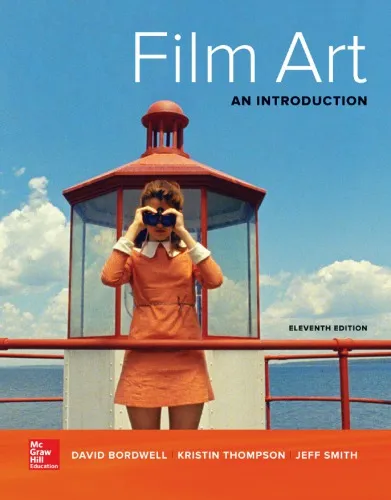

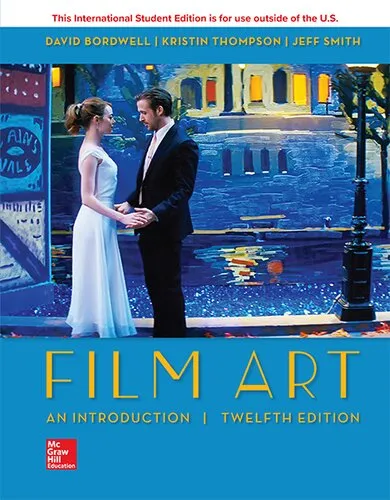
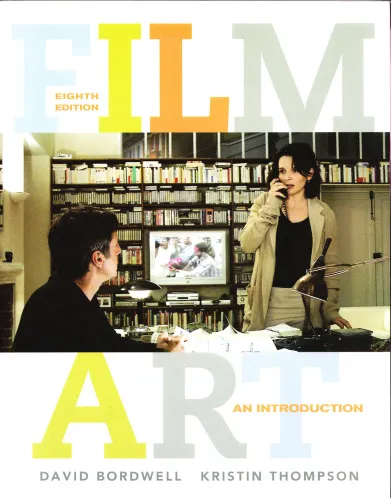
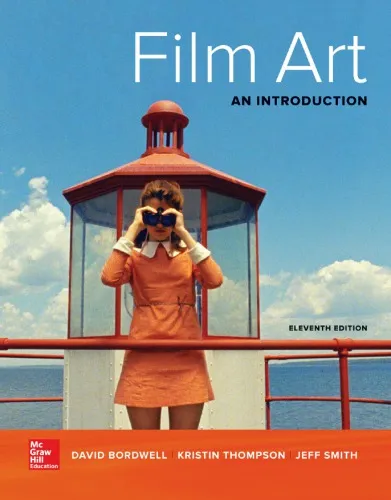
![Film Art: An Introduction [with Connect Access Code]](https://s3.refhub.ir/images/thumb/Film_Art__An_Introduction__with_Connect_Acces_45912.webp)

